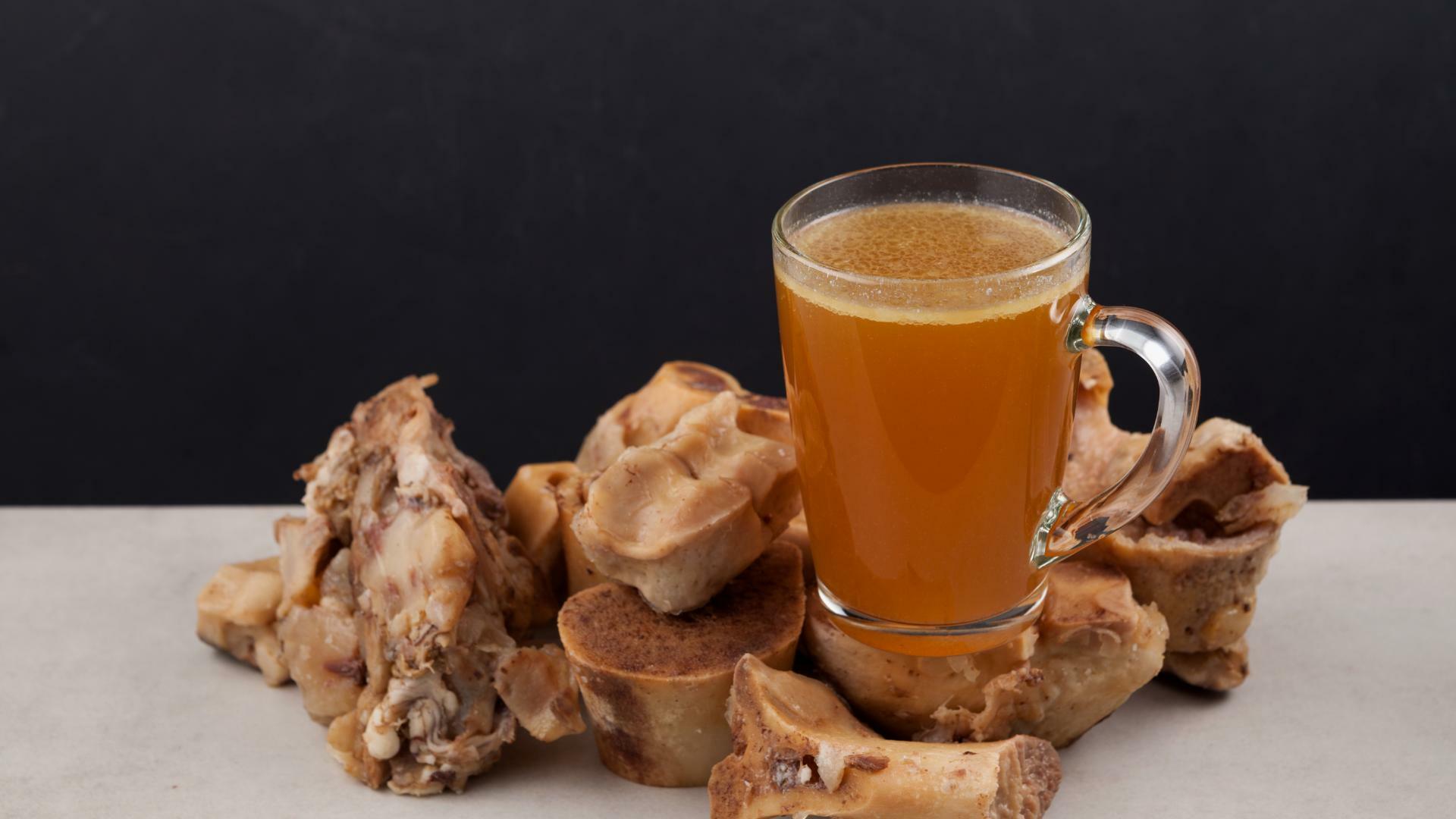Nourishing Bone Broths
By by Brenda Hurst FMHC

Nourishing Bone Broths
by Brenda Hurst FMHC
Bone broths are the original no-waste food. Our ancestors practiced symbiotic living, coexisting with the land and animals in a way that is almost unimaginable today. Survival depended on this deep connection. Every part of the animal was honored—bones, marrow, and connective tissue nourished the body, while the hide, tendons, and other parts were repurposed for clothing, tools, and shelter. This ancestral harmony fostered a thriving ecosystem where nothing was wasted, and in return, the land provided abundance and optimal health for all.
Throughout history, bone broth has been a staple in traditional medicine across many cultures. In Traditional Chinese Medicine (TCM), it has been used for centuries to nourish the kidneys, strengthen the immune system, and support Jing—the vital essence responsible for growth, development, and reproduction. Different types of animal bones were chosen for specific health benefits, reflecting an early understanding of food as medicine. Even Hippocrates, the renowned Greek physician often called the father of modern medicine, was a strong advocate for bone broth. He recommended it for digestive health and as a key component in the body’s healing process.
From a nutritional and functional medicine perspective, homemade bone broth offers a wide range of potential health benefits based on the ingredients used in its creation. It provides essential nutrients, amino acids, gelatin, collagen, and minerals that may help:
- Support immune function
- Promote gut healing by nourishing the microbiome
- Reduce systemic inflammation
- Strengthen joints and connective tissues with collagen and amino acids
- Balance hormones naturally
- Enhance skin, hair, and nail health
- Aid in maintaining a healthy weight
- Improve overall vitality and well-being
- Fight viruses
- Calms the mind
- Builds the blood & iron levels
- Heals, soothes and protects the GI tract
How to Make Bone Broth (and How to Avoid Rancid Fat) — Instant Pot, Stove and slow-cooker
https://eatbeautiful.net/how-make-bone-broth-avoid-rancid-fat/ by Megan Stevens
Make meat stock and bone broth with the same bones, and avoid rancid fat in the process.
Course: Breakfast, DInnerCuisine: AmericanKeyword: bone broth, crock pot, how to, instant pot, meat stock, slow cookerServings: 10 cupsCalories: 40kcalAuthor: MeganCost: $3
Prep Time; 10 min Cook Time; 2 hours
Equipment
- Instant Pot, slow cooker or stock pot
Ingredients
- 10 cups filtered water (You will need 20 cups water total if you choose to make two batches from the same bones.)
- 3 pounds bones : grass-fed and sustainably-raised
- 2 Tablespoons sea salt (You will need 4 Tablespoons sea salt total if you make two batches.)
Instructions
- First, to make short-cook Meat Stock: Place water in pot. Add bones and sea salt.
*Crock Pot or Stove Top: Set timer so broth will simmer 2 to 2-½ hours; depending on how long it takes for slow cooker or pot to come to a simmer; set the time accordingly, about 3 to 3-½ hours.
*Instant Pot: Place lid with rubber ring securely into place. Turn steam valve to closed position. Choose "Soup" setting of 30 minutes. When timer goes off, allow pressure to release naturally for 1 hour. Then place dish towel or hot pad over steam valve and open it carefully to release any remaining steam.
- Two options for harvesting fat and meat stock: Option 1, use a ladle or metal spoon to ladle all the fat off the top of meat stock. Save this fat for another use. Option 2, when meat stock and pot are cool enough to handle, pour the entire contents of pot (fat and stock) through a fine mesh sieve into storage jars, reserving the bones.
- You now have either a pot with stock (almost no fat) and bones. OR you have an empty pot. The first option will give you less overall stock and broth in the end, but all the nutrients will be concentrated into one bone broth.
*The second option will give you two batches: one, a meat stock that's high in fat and gelatin, rich and flavorful. And two, a bone broth without fat but higher in protein and collagen.
*Both variations are good and just a matter of preference. Most importantly, we aren't allowing the fat to have a long cooking time, during which time it becomes rancid and bad-tasting.
- Option 1 — The fat is now removed. Continue cooking the broth now, to extract the collagen and protein from the bones with the longer cooking time.*
*Crock Pot or Stove Top: Cook broth an additional 24-72 hours.
*Instant Pot: Reseal lid. Turn steam valve to closed position. Choose "Manual" button, then "-" button to set time at 120 minutes. When timer goes off, allow pressure to release naturally for 1 hour minimum. Then place dish towel or hot pad over steam valve and open it carefully to release any remaining steam. Strain and store in fridge until ready to use.
- Option 2 — Return bones to pot. Add 2 Tablespoons additional sea salt and 10 cups additional filtered water.
*Crock Pot or Stove Top: Cook broth an additional 24-72 hours.
*Instant Pot: Reseal lid. Turn steam valve to closed position. Choose "Manual" button, then "-" button to set time at 120 minutes. When timer goes off, allow pressure to release naturally for 1 hour minimum. Then place dish towel or hot pad over steam valve and open it carefully to release any remaining steam. Strain and store in fridge until ready to use.
Notes
Adding apple cider vinegar
Apple cider vinegar may be added to this recipe, if desired, as an aid in extracting nutrients from the bones. If you wish to include it, use 2 Tablespoons apple cider vinegar in each batch of broth.
Whey may also be used, as a fruit-free alternative.
Contrary to many articles, bone broth is not high in minerals. It is protein that increases in bone broth from the longer cooking time. (ACV does not help to release minerals from the bones, except for a small amount of calcium.)
Nutrition
Serving: 1cup | Calories: 40kcal | Fat: 0.65g | Sodium: 200mg | Potassium: 125mg
References & Credits
The Professional Chef Ninth Edition; The Culinary Institue of America
https://www.worldhistory.org.uk/industrial-revolution-impact-on-society
https://eatbeautiful.net/how-make-bone-broth-avoid-rancid-fat/
https://svasthaayurveda.com/a-healing-ayurvedic-bone-broth-recipe/





